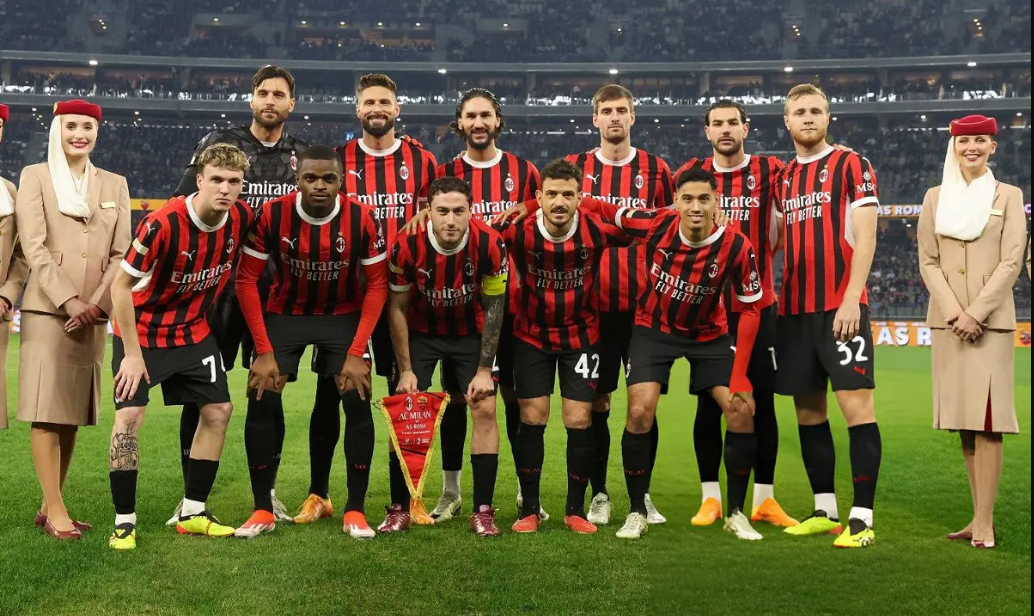Introduction to AC Milan Player Ratings
AC Milan, one of the most storied football clubs in history, has passionate fans who are always eager to discuss player performances. Each match sparks conversations about how players fared on the pitch, leading to a surge of interest in AC Milan Player Ratings. These ratings offer insights into individual performances and provide a snapshot of the team’s overall health.
Yet, while these ratings can be thrilling for fans and analysts alike, they come with their own set of nuances. Are they merely entertaining numbers or do they carry deeper implications for players and the club? As we delve into this topic, we’ll explore what player ratings mean for AC Milan and whether there are any risks involved in relying too heavily on them.
The Impact of Player Ratings on the Team and Fans
Player ratings have become an integral part of the football experience for fans and teams alike. For supporters, these ratings offer a tangible way to assess individual performances, creating discussions that can last long after the final whistle. Fans often rally around their favorite players, dissecting each rating as if it were a verdict on their skills.
On the team side, player ratings can influence morale. A high score might uplift a player’s confidence, while poor ratings could lead to self-doubt or frustration. This dynamic is crucial; how players react to feedback shapes team cohesion and performance.
Moreover, media coverage amplifies this impact. Articles and social media posts about AC Milan player ratings spark debates that bring fans together or drive wedges between them based on differing opinions. The emotional investment in these scores reflects just how deeply they resonate within the football community.
Criticism of the Player Ratings System
The AC Milan player ratings system often faces scrutiny from fans and analysts alike. Many argue that these ratings can oversimplify a player’s performance, reducing complex skills to mere numbers.
Critics point out the inherent subjectivity in assigning scores. Different observers may prioritize various aspects of gameplay—offensive contributions versus defensive solidity—which can lead to discrepancies in how players are rated.
Moreover, the rapid pace of social media amplifies any dissatisfaction. A low rating for a fan favorite can spark outrage online, affecting both players’ morale and team dynamics.
Journalists and pundits also frequently question the criteria used for assessments. Are they based on statistics alone, or do they account for context? This lack of transparency fuels ongoing debates about fairness and accuracy within the rating system.
As discussions continue, it remains clear that not everyone is satisfied with how performances are quantified.
Potential Risks for Players and the Team
Player ratings can create immense pressure. When a player consistently scores low, it affects their confidence on the pitch. This can lead to a decline in performance, creating a vicious cycle.
Additionally, fans often take ratings personally. A poor score for a favorite player could ignite backlash from supporters. This negativity can weigh heavily on both players and coaching staff alike.
Injuries also come into play when discussing risks tied to ratings. The fear of receiving criticism may push players to return too soon from an injury just to improve their standing.
These evaluations might foster unhealthy competition within the squad. Players focused solely on individual ratings may forget that soccer is ultimately about teamwork and collaboration rather than personal accolades alone.
How Other Teams Handle Player Ratings
Different football clubs have their philosophies regarding player ratings. Some teams use analytics-driven approaches, analyzing vast amounts of data to create objective assessments. This method focuses on tangible statistics like goals scored, assists, and defensive actions.
Others opt for a more subjective viewpoint. Coaches or analysts watch matches closely, considering factors such as teamwork and work rate that may not show up in traditional stats.
Certain clubs choose to involve fans in the process. By allowing supporters to vote on player performances after each game, they foster community engagement while providing a broader perspective on how players are perceived.
Social media has also influenced how teams approach player ratings. Quick feedback from fans can shape narratives around players almost instantly, putting additional pressure on both individuals and management alike. Each team navigates this landscape differently based on their culture and objectives within the sport.
Strategies for Minimizing Risks with Player Ratings
To reduce the risks associated with player ratings, clubs like AC Milan can implement several strategies.
Fostering a positive team culture is essential. Encouraging open communication among players and coaching staff helps mitigate anxiety tied to public ratings.
Focusing on individual development rather than solely on external validation can shift mindset. Players should be reminded that their growth matters more than numbers alone.
Moreover, utilizing diverse metrics for evaluation enhances accuracy. Incorporating statistics from various sources offers a holistic view of performance beyond subjective opinions.
Regular feedback sessions can also play a crucial role. Constructive discussions about performances allow players to understand areas needing improvement without the fear of judgment based solely on ratings.
Engaging fans in meaningful conversations around player assessments fosters understanding and reduces hostility toward rating systems. By building this bridge between fans and players, everyone benefits from a supportive environment.
Conclusion: AC Milan Player Ratings
The world of AC Milan Player Ratings is a complex one. It influences team dynamics, fan engagement, and even the mental state of players. While ratings can provide insights into player performance, they also carry inherent risks.
Criticism often arises from the subjective nature of these ratings. Fans and analysts may disagree on how a player’s performance should be quantified, leading to frustration or disappointment among supporters. This disparity can foster an environment where players feel undue pressure based on fluctuating ratings.
Moreover, when player ratings are tied so closely to public perception, individual athletes might experience stress that affects their game-day performances. A poor rating following a challenging match could exacerbate feelings of self-doubt or anxiety for some players.
Other teams have implemented various strategies to mitigate these issues. They focus on internal assessments rather than relying heavily on external opinions. By fostering open communication and emphasizing personal growth over numerical evaluations, clubs aim to create healthier environments for their athletes.
To minimize risks associated with AC Milan Player Ratings, it’s essential to balance transparency with sensitivity towards individual circumstances. Teams should prioritize constructive feedback while remaining aware of how public sentiment can sway quickly in today’s digital age.
AC Milan’s approach to player ratings will continue evolving as both fans and players navigate this intricate landscape together.









